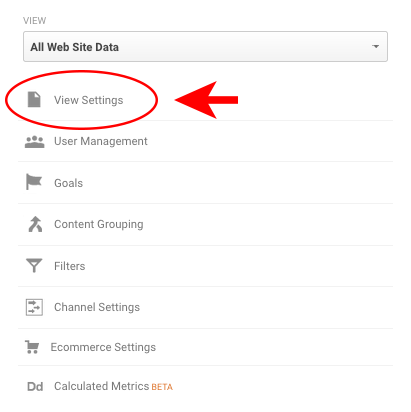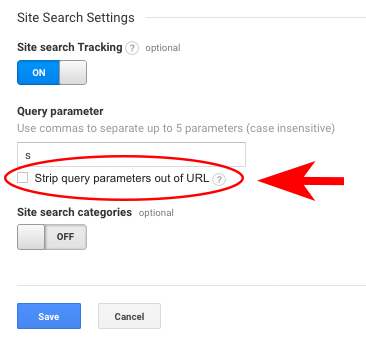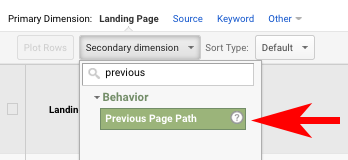Updated: Aug 14, 2017
Back in the heyday of SEO, Google gave us bountiful keyword data, rich with information and insights into users search patterns both on and off websites. But in 2013, Google changed to secure search, meaning keyword data is no longer passed along to site owners or SEOs.
This was a big change for SEOs and definitely provided a challenge when crafting strategies and tactics to maximize visibility, traffic and conversions. Though the days of getting user interaction and keyword data in one place are far gone, fear not; there is a way to better understand what users are looking for: SSA or site search analytics.
A website’s site search (usually a little bar in the header or footer) is where people go when they are lost on their site. Tracking the data that comes along with the use of internal site search can provide some invaluable information to site owners and SEOs.
Below, you can find step-by-step instructions for setting up site search analytics, as well as ways in which you can use this data to better understand your target audience and maximize the user experience on your site.
How to Set up Internal Site Search Tracking in Google Analytics
To start tracking, sign in to your Google Analytics and follow these steps:
- Click Admin >> View Settings:
- Scroll to the bottom, and toggle the Site Search Tracking ‘ON’.
-
In the Query Parameter field, type in the search query parameter. To find the search query parameter, go to your site and do a search. Look at the URL that is returned. There are generally two kinds of internal search engines and each will return a different structure for the search URL: GET-based and POST-based search engines. Here’s a quick reference GET- and POST- based search engines:GET-based search engine URLs (usually in WordPress) will look something like this:www.examplesite.com/?s=bounce-rateYou can identify the search query parameter by finding the letter or word that comes before the ‘=’ in the URL that appears after the search. In this example ‘s’ is the search query parameter. It’s often an ‘s’ or a ‘q’, but it could be a full word, like ‘search’.POST-based search engine URLs (Drupal, Expression Engine) will look something like this:
www.examplesite.com/search/site/bounce%2520rate
In order to track searches in by a post-based search engine, there are two options, 1) change your POST-based search engine to a GET-based engine and follow the steps above; or 2) send a virtual pageview every time a search is performed, that will include the query. You will need to add tracking code to your results page that appends the search term to the URL every time a search is performed. It will look something like this:
analytics.js: ga(‘send’, ‘pageview’, ‘/search_results.php?q=keyword’);
- If you check the ‘Strip query parameters out of URL, you will strip just the parameter you entered above. If you are not already stripping URL parameters, this may be helpful but not necessary.
- Hit save and start tracking!
Gain Insights with Site Search Analytics
As with any data, the most important next step is turning it into information and figuring out what to do with it. Here are some things to look at and actions to take when analyzing your site search data:
- Look at how often the search box is used and how many pages it took for people to find what they were looking for. If it’s used a lot, you may need to take a hard look at your navigation and internal linking. Perhaps you could reorganize your navigation or adding additional navigation to help users get to popular content more quickly.
- Find out what users are having a hard time finding on your site. Check out what queries and keywords are searched the most. Search terms that are used frequently can help you identify content that is popular or hard to find. Make that content more prominent or linking to it more often on relevant pages.
- See what pages are users looking from. Add the previous page path dimension to your data to see where users are getting stuck. This gives you an idea for the search pattern of the audience and what content they need to get in what order. Help users out by adding a link to what they are searching from on this page. If the link already exists on that page, it’s probably not prominent enough. Consider moving it up on the page, or adding some contrasting design elements to bring it to the fore.
- Identify misspellings or variations on spelling. This may reveal other ways to spell or phrase something on your website. New keywords to target, perhaps?
- Track ‘no results’. Sometimes, users are looking for content on your site that you don’t have but could be relevant. Mining this keyword data can potentially help you create new content or resources that your users are looking for, which potentially lead to more landings, and better engagement.
- See if conversions increase with the use of site search. Forty-three percent of ecommerce website users navigate to the site search immediately and are 2 to 3 times more likely to convert, according to a report by Forrester Research. Look at the number of visits that used site search and which of those resulted in a conversion.
- Look at the queries that are used that lead to the most conversions. This can help you prioritize products or content. But, again, your search results need to be contextually relevant. If they are not, this could result in reduced conversions and less engagement with the site.
Don’t miss out on the valuable data – start tracking today!
Have questions about how to track your internal site search data or what do with it? Have suggestions on other ways to use that data? Share in the comments or contact FourFront today.











